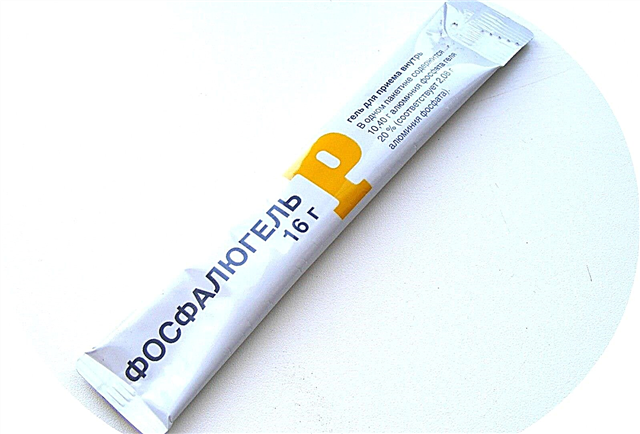
There are words and diagnoses that frighten parents very much, and this is quite reasonable. One of these diagnoses is croup. Everyone has heard that he is extremely dangerous, but few people know exactly how to recognize him in a child and how to help the baby.
The famous children's doctor Yevgeny Komarovsky tells how to determine the signs of croup and what to do.

What happens?
In children, croup is completely different.
Evgeny Komarovsky urges parents to clearly see the difference between true and false croup.
In both cases, we are talking about a critical narrowing of the lumen of the larynx due to its inflammation and edema that has developed in the tissues.
In the absence of help and proper treatment, the child can die - either from asphyxia or from hypoxic damage to the brain and heart.

False croup is more common, it is inherently a complication of any viral disease, most often - parainfluenza, adenovirus, influenza viruses of common strains. True or real croup is a diphtheria manifestation that develops against the background of a very specific disease - diphtheria. In this case, the baby's larynx not only narrows due to swelling, but also becomes covered with dense diphtheria films.
In the olden days, most children with diphtheria died from true croup. And only after the vaccination against this ailment became universal, the problem was dealt with. Today, cases of diphtheria are rare, and even cases of diphtheria, complicated by true croup, and even more so.

Symptoms and signs
The symptomatic picture both with false croup and with true croup is very similar, however, there are still some differences. Parents can suspect that something was wrong if a child fell ill with any viral infection or diphtheria 2-3 days ago. It is after such intervals that the first signs appear - the child has a persistent, dry, barking cough, sore throat. With both false and true diphtheria croup, a hoarseness appears. But if false, the child does not completely lose his voice, which cannot be said about diphtheria.
The nature of breathing changes - it becomes noisy, hoarse, whistling. The stronger the stenosis (narrowing), the more wheezing the inhalation becomes. The child has difficulty breathing air. The wheezing becomes especially noticeable at the moments when the child is crying, and at night.

The fact that the stenosis has reached a severe form is evidenced by uncontrolled salivation, shortness of breath, cyanosis in the area of the nasolabial triangle and pale skin. The child may lose consciousness. Due to the inability to take a normal inhalation in volume, hypoxic damage to internal organs develops.
With true croup, the baby almost always has a high fever, fever, and a pronounced state of intoxication. In the throat you can see a special thick film coating characteristic of diphtheria. It has a grayish tint.
Diphtheria stenosis does not get worse at night like a croup. So, with him there are no acute reversible attacks of suffocation. In a more or less even mode, it gradually turns into an extremely serious state of the asphyxial uncompensated stage. Loss of voice with real croup leads to the fact that the baby cries and coughs without sounds, in complete silence. Deterioration occurs rapidly, in the absence of qualified assistance, the child in most cases dies.
You will learn how to independently diagnose croup in the video below.
What to do?
Evgeny Komarovsky within the framework of his project "School of Doctor Komarovsky" has repeatedly emphasized that the rules for providing first aid to a child for croup are important knowledge for any mother, since false croup can develop in absolutely any child.
If the baby does not have diphtheria, then we can talk about false croup. In this case, the mother needs to call an ambulance, calm the baby, because the stress and fear of not being able to take a normal breath can increase the muscle spasm, and the larynx will close even more. It is best to open all windows, the balcony door, or take the child out into the air while waiting for the doctor.
No medication is needed. Only one age-related dose of an antihistamine is acceptable, for example, "Suprastin", it will help to slightly reduce the swelling of the tissues of the larynx and wait for the arrival of the medical team.

The same first aid rules apply to true croup. If, for some reason, after the diagnosis of diphtheria, the child stayed at home (despite the fact that hospitalization in an infectious diseases hospital is supposed to be), then the baby should be taken to the hospital as soon as possible.
A few more tips to help your child with croup are in the next video.
Treatment
If it is preferable to treat false croup at home, in an environment where the baby is familiar with everything, in order to avoid stress, fear and everything that can lead to spasms of the larynx, then true croup is treated only in a hospital setting, and there are no other options. A baby with diphtheria is sent to the infectious diseases department of a children's hospital.

The only way to save the child is to inject him with anti-diphtheria serum, which is obtained from horse blood. Horses are pre-infected with diphtheria bacillus.
At home, such injections are unreasonable and criminal for the very reason that serum is very allergenic, and often gives such side effects that they can hardly be eliminated in a hospital. At home, this is basically impossible.
If it is very difficult for a child to breathe, he is injected with "Prednisolone", in addition, droppers are given to reduce the manifestations of intoxication, which in its essence is poisoning with metabolic products of the pathogen of diphtheria. The most dangerous is exotoxin. The throat is irrigated with antiseptic solutions. If false croup does not require the use of antibiotics, then with diphtheria they are mandatory, since the infection is bacterial.


In the next video, Dr. Komarovsky gives an important recommendation for treating croup in children.
Effects
In most cases, with competent first aid and reasonable treatment, false croup rarely has long-term negative consequences and complications. Unfortunately, the same cannot be said about true croup.
Very often, after suffering from diphtheria croup, conditions such as pneumonia, otitis media, meningitis develop. And no one needs to be blamed for this - the quality of medical care in situations associated with real croup does not in any way affect the likelihood of complications. But it directly affects the survival rate.
If mistakes are made, help came late, did not come at all, the child with true croup may suffocate and die.

How to prevent?
If there are no specific preventive measures from false croup, then a child can be successfully saved from a diphtheria wave.
To do this, parents need to reconsider their attitude to vaccinations, in particular - to the DPT vaccine. It belongs to the mandatory ones provided for by the National Calendar of Preventive Vaccinations in Russia. It reliably protects against diphtheria bacillus.

Does this mean that the vaccinated baby will not get sick with this ailment? No, it doesn't. But such a probability is small, moreover, in children who have received DPT, even if they are infected with diphtheria, the disease proceeds more easily, without signs of true croup.
DPT in Russia is given to infants at 3 months, then every two months twice more. The fourth vaccination is carried out one year after the third, and repeated vaccinations - at 6 and 14 years old. To refuse such vaccinations means deliberately exposing the child to great danger.




